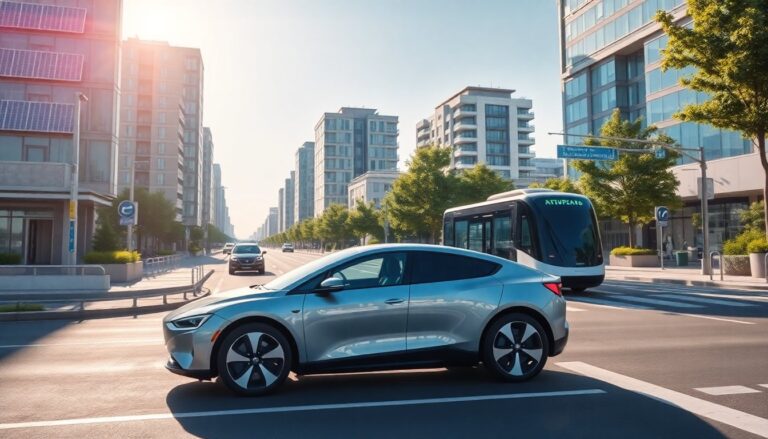Argomenti trattati
The automotive industry is experiencing a profound transformation, driven by technological advancements and evolving consumer preferences. As we navigate the complexities of the 21st century, several pivotal trends are emerging that promise to redefine our approach to transportation. From electric vehicles to autonomous driving, the automotive landscape is rapidly transforming, presenting both challenges and opportunities for manufacturers, consumers, and policymakers.
This article explores the major trends poised to influence the automotive sector in the coming years, offering insights into what drivers can anticipate from their vehicles in the near future.
The rise of electric vehicles
One of the most significant trends in the automotive industry is the increased adoption of electric vehicles (EVs). As concerns about climate change and air quality intensify, consumers are increasingly seeking sustainable transportation solutions. Concurrently, governments globally are implementing stricter emissions regulations, compelling manufacturers to innovate. Recent studies indicate that the global electric vehicle market is expected to grow remarkably, with sales projected to surpass 30 million units by 2025.
Challenges and advancements
While the shift to electric vehicles holds promise, it also presents challenges. The current charging infrastructure is often inadequate, leading to range anxiety among prospective EV owners. However, advancements in battery technology are paving the way for faster charging and extended range. Manufacturers are investing significantly in developing more affordable EV models, which will broaden access to electric vehicles.
Autonomous driving technology
Another transformative trend in the automotive sector is the push toward autonomous driving technology. Major automotive manufacturers are investing in research and development to create vehicles capable of navigating without human intervention. The potential benefits of autonomous vehicles include enhanced safety, reduced traffic congestion, and improved mobility for individuals unable to drive.
Safety and regulations
However, the path to widespread adoption of self-driving cars is complicated by challenges related to safety and regulatory frameworks. Autonomous vehicles depend heavily on sophisticated artificial intelligence systems to analyze data from various sensors. Ensuring these systems can manage the unpredictability of real-world driving conditions is a significant obstacle. Additionally, regulatory frameworks must evolve to accommodate this new technology, necessitating collaboration between industry stakeholders and government entities.
The shift towards connectivity
With technological advancements, vehicles are becoming increasingly interconnected. The concept of the Internet of Things (IoT) is permeating the automotive sector, enabling vehicles to communicate with each other and with infrastructure. This shift toward connectivity enhances the driving experience and has the potential to improve safety and efficiency on the roads.
Features such as real-time traffic updates, remote diagnostics, and over-the-air software updates are becoming standard in modern vehicles. Furthermore, the integration of smart technology allows drivers to control various functionalities through their smartphones, adding convenience.
Future implications
As the automotive landscape continues to evolve, the implications of increased connectivity are extensive. It paves the way for new business models, such as ride-sharing and subscription services, which challenge the traditional vehicle ownership model. With the rise of connected cars, manufacturers must prioritize cybersecurity to protect drivers’ data and ensure system safety.
The automotive industry stands on the brink of a major transformation driven by innovative technologies. The rise of electric vehicles, advancements in autonomous driving, and the shift toward connected cars are just a few trends that will shape the future of transportation. As these developments unfold, they will not only redefine the driving experience but also create new opportunities for manufacturers and consumers alike. This journey promises to be dynamic, filled with challenges and breakthroughs that will redefine our relationship with mobility.

